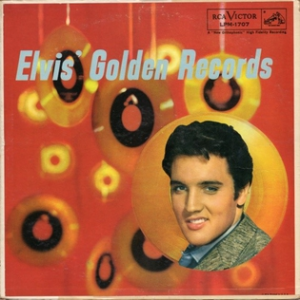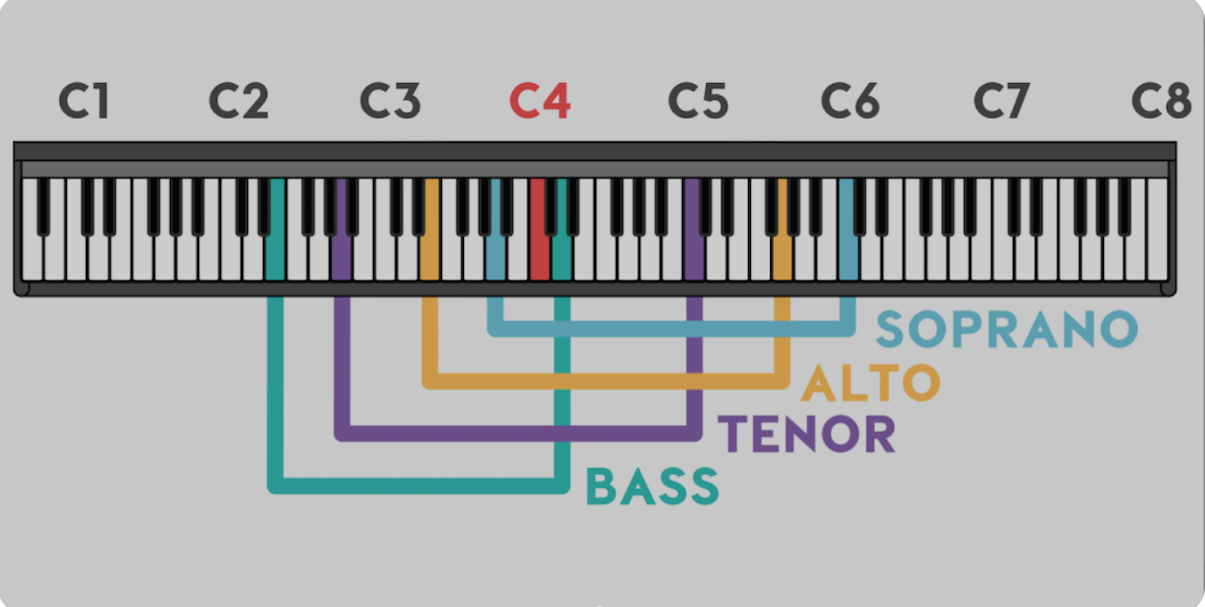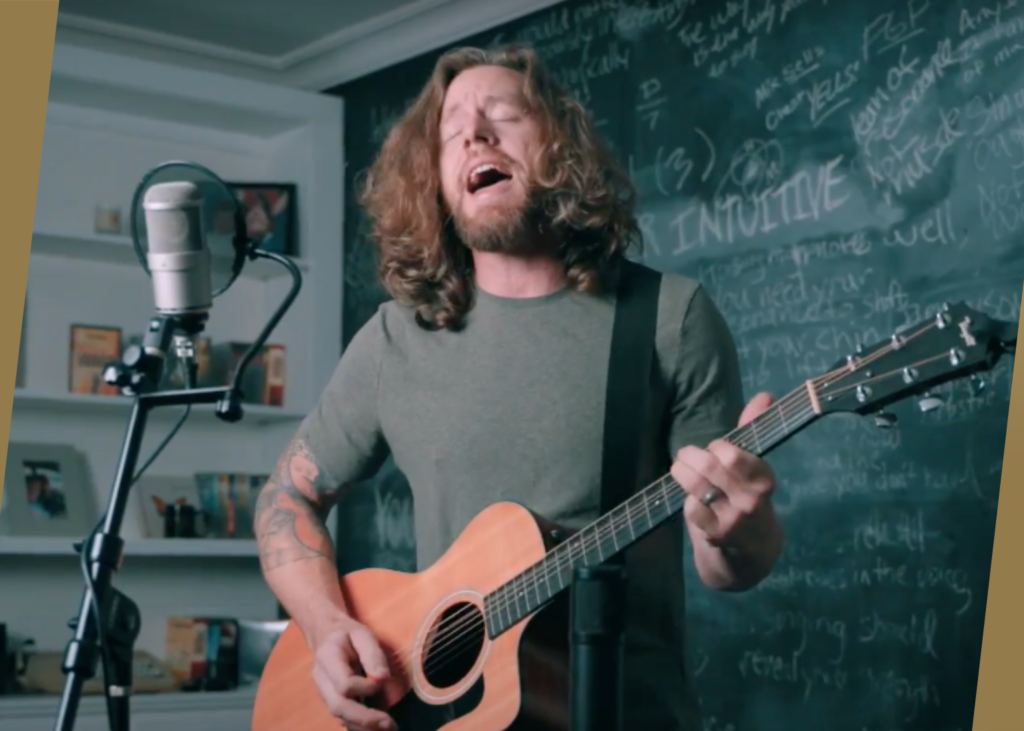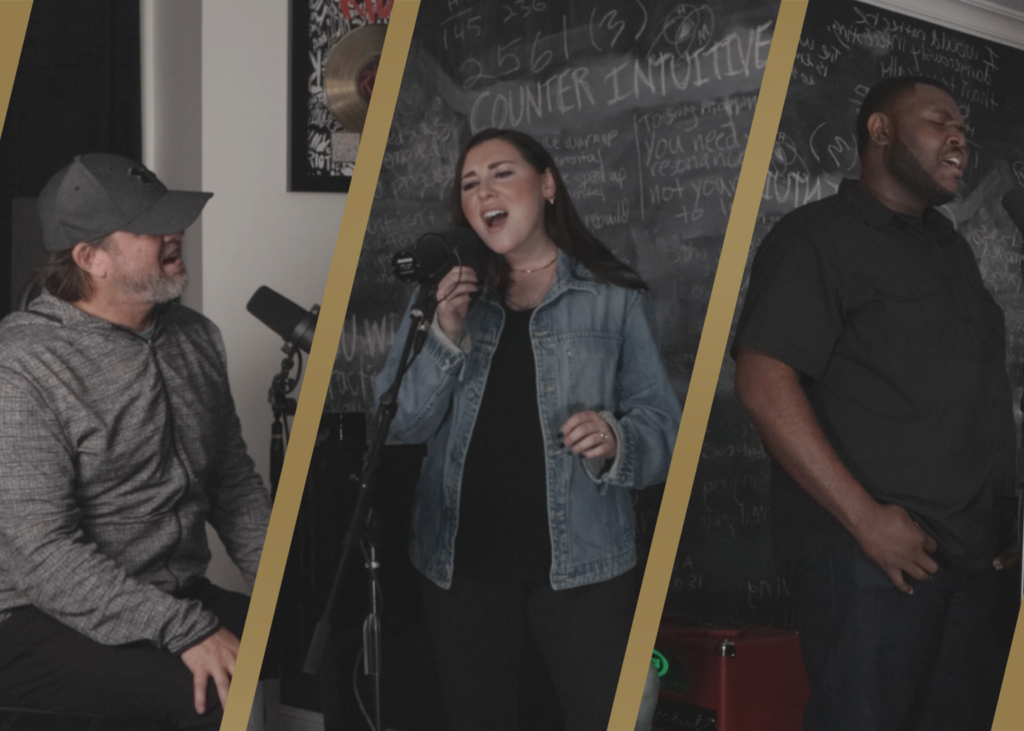How To Sing Rock
By: Brett Manning
Before tackling singing rock music, we must understand how the genre came about and what influences have shaped this continuously popular style of music.
Also, when writing this blog, I recently finished a groundbreaking program named “How to Sing Rock.” This is something I’m incredibly proud of.

A brief history of rock music
Rock and Roll got its official name as the genre appeared somewhere in the early 1950s.
Beginning with electric guitars and aggressive drums added to rhythm and blues (R&B), blended with black gospel music in the 1940s, early rock music emerged with early legends like Chuck Barry, Jerry Lee Lewis, and Little Richard.
Rock and Roll would eventually combine the aggression of loud guitars—eventually distorted guitars—and other genres like country/western and surf music.
A King appears: Introducing Elvis.
In modern pop, Michael Jackson was considered king during his lifetime. Aretha Franklin and Stevie Wonder were the queens and kings of soul/R&B. All music styles have pioneers that influence generations to come.

In the mid-1950s, Elvis Presley arrived as a ‘Memphis/Mississippi’ lover of the delta blues sound, which originated in his region.
With Haley and the comets’ hit song “Rock Around the Clock” in 1955, there was already an established buzz about this thing we now call ‘Rock Music.’
One year later, the first real identified rock singer and man of mystery, musicality, and tremendous charisma, Elvis Presley, would release the most iconic song of his time, inventing an entirely new sound.
The date was 1956. The song was heartbreak hotel. This was Elvis’s first number 1 hit and million-selling single. He would go on the be the number-one-selling solo artist of all time. A feat that his vocal extremes and diverse ability made possible.
Elvis would then—and now—be crowned the king of Rock and Roll and inspire rock singers worldwide more than a century later.
In fact, it was Elvis that inspired me to sing at age 10 when I first saw his movies on the ‘after-school specials. There was something so distinct and captivating that I bought his greatest hits record and wore it out!
A year later, at age 11 and shortly before moving to a larger city in Utah, I sang at a school talent show, and because I had imitated and sung Elvis Presley, the girls were screaming their heads off. I was like🤔 — there’s something to this. 😊
Getting Started with becoming a Rock Singer
Below, we will get into specifics of singing rock, but here’s a checklist of what you must have developed to sing rock.
Rock Star Personality
The term rock star has been thrown around for decades. Often we use this term to describe someone on an ‘all-star’ sales team at a big corporation.
But what is your actual persona or personality? Your charisma? Your mystique, your aggressive, tough, and edgy personality?
Are you ready to be a true rock singer? Does this fit your actual personality? Are you energetic or at least intriguing enough to lead a rock band?
A Real Rock Voice
Do you have a tough voice? Can you handle singing rock for several nights in a row without damaging your voice? Because rock is typically—though not necessarily—sung quite loud.
This means you need an experienced vocal coach who can prepare your vocal cords (Not vocal chords. The “ch” spelling refers to musical chords) for the rigors and extremes you’ll be putting on your mind and body to convincingly sing rock music.
Remember this good vocal technique means you’re probably going to be a decent rock singer. Great vocal technique is crucial if you want to compete with the best singers in the industry.
Opera singers can often have an advantage in this area because they’ve built strong coordination and have been taught to project. Classical music, especially Bach, Chopin, and Rachmaninoff, give the ear the intensity to sing rock music that often is minor and intense!
Also, classical singing lessons—if allowance is made for other textures and techniques—can provide great vocal control and the breathing exercises are usually as intense or more intense than your average commercial voice coach.
This means a wide vocal range, a diverse and exciting tone, a dynamically wide (soft to loud) voice, an aggressive sound, possible screams, rasp, and/or gravel tones. Or what I call in my program “How to Sing Rock”…. a textured sound.
Look the part
Most physically demanding styles, like rock singing, also require a lot of physical activity on the stage. Be in shape, grow your hair or find a cool ‘short-haired’ rock style. And dress the part. Branding is everything. We’ll discuss this later in this blog. But you have to look like a rock star if you want to sing in a rock band. Because most rock bands understand that to get signed to a record label, your front man or front woman has to look COOL!!!

Play an instrument
Most people who’ve followed me for a while know I coached Hayley Willams of Paramore for 9 years. Her voice was certainly one for the ages. High notes, surprising power, kill vocal resonance, and a strong mixed voice.
What people a lot of people don’t know is that she is a killer guitar player. There was an automatically added swagger because of this. She also knew her way around drums and keyboards. This enhanced her musicality because since she’s already a human instrument, playing other instruments helped her creativity and the undressing of rhythm, groove, and melody.
For most rock singers, the guitar is a crucial instrument. It’s especially great to add energy to the chorus sections of your song. Because it’s a prop you can wear that gives a certain presence or swagger on stage; furthermore, you strum a guitar, but you can’t strum a piano. However, the piano also has certain advantages. So look to the stars you admire and see which ones you resemble the most. (See list below)
Write your own songs.
If you’re a great singer, that’s a good start. But a lead singer will usually be expected to be the lead songwriter as well. Often rock bands begin with decent rock singers who have tons of their own songs, and they form a band around themselves to fit the music.
Rock Music Sub Genres

Rock music is known for its diversity. The following is a basic list of genres of rock styles for you to listen to and get a good sense of your taste.
Click on the Link below after you’ve read this blog. Or, go to www.singingsuccess.com and get my course titled “How to Sing Rock”
Also, remember that finding your distinct sound is CRUCIAL for establishing an identity as a rock singer.
How To Find Your Rock Singing Style
Before you even think about finding your own style of rock singing and obtaining a voice unique enough to be believable, you have to combine 3 fields of thought:
- What do you love to sing
- What does your audience think of your artistic direction
- What does your career team think of your direction?
*Career team consists of music mentors, vocal coaches, band members, managers, and other decision-makers who have the intellectual honesty and artistic integrity to tell you the truth.
Study The List
Our master list is nowhere close to exhaustive, but most people can’t name 20 artists off the top of their heads. It’s because of ‘information overload’. We had heard so much music that our brains couldn’t categorize it all when asked, “what are your influences?”
This Link (also mentioned above) takes that work out of the way for you.
Adapt
Be willing to change up from time to time. Singers are incredibly emotional people who need the freedom to pivot to the most recent love or passion. This is what makes us creative. Don’t despise this trait.
Build Your Voice First
You have no real idea where you’ll end up until you find out what you can do vocally. Voice training should be your #1 pursuit. Ignore this, and you’ll risk being boring and average. Or possibly damaging your voice attempting music that’s not easily attained naturally.
Vocal Range
Importance of the right technique in range building
Stretching vs. Coordinating the Vocal Cords.
It is a partial fallacy that you need to learn how to stretch your vocal cords to sing higher. If fact, stretching has a limited function. Think of singing gear shift to gear shift as you sing higher. In other words, the higher you sing, the less air pressure and push are needed to obtain these notes because around your break area (for tenors E4, and F#4. For sopranos, A4, Bb4 and B4. Bass Singers are A3, Bb3 and B3. Altos are close to the tenors breaking area) there is a transition to either suddenly flip into falsetto, yell—which results in a stretched vocal cord sensation—or a mix, also called the blended sound of head voice and chest voice.
This happens because the vocal cords hitting the notes feels like a zipping up sensation in the vocal cords. You end up decreasing the tension because there’s less vibrating surface on the vocal cords.
Just like pressing down on a guitar string, the fret marks a shorter vibrating surface on the string. Same thing with the vocal cords. Some argue that this happens on the 2nd bridge and some on the 3rd, which occurs a half octave (for the 2nd bridge) or full Octave (for the 3rd bridge) above the first bridge or break area.

Learn The Art of Vocal Cord Dampening
The exercises named below assist in allowing the vocal cords to dampen or ‘zip up’ in order to achieve better high notes with solid technique.
Primarily, the singer will experience a slight squeeze that results in a thinner and often brassy or brighter vocal tone.
To get a complete understanding, check out my blog titled ABOUT US at the bottom of this page:
https://singingsuccess.com/voice-lessons/
Smooth over breaks or ‘Passaggio’
The word ‘passaggio’ is Italian for ‘passage way’ and refers to the connection area where chest voice and head voice are blended or mixed.
The above-mentioned ‘cord dampening’ is one of the major vocal techniques used to smooth over breaks or disconnects in the passaggio area.
But this requires you to build your mixed voice utilizing 3 resonance chambers with equal ultimacy. The head, mouth (which refers to chest voice), and pharyngeal voice or nasal quality.
My best-selling program and first of its kind, “Mastering Mix,” can give you a solid edge to developing proper technique and muscle memory in this elusive quality.
https://singingsuccess.com/mix/
Find out if you’re a bass, baritone, tenor, alto, or soprano.
To truly understand this, you’ll want to book with a coach at our studio who can help you unlock the fullness of your vocal potential. Booking info is at the bottom of this article.
However, to get a cursory glance at where your stand, check out the keyboard graphic above showing vocal ranges for the vocal classifications. And realize that you don’t have to be tied down to these.
Join my V.I.P. program for I.O.A. -instant online access to ALL of my programs and listen as we call out the pitches in the vocal scales and exercises and see how much range and freedom you can discover.
Be content with the voice you have now, and DON’T try to sing songs out of your range.
Breathing And Posture
Stand tall
Posture has been hashed and rehashed for decades. I like to say ‘comfortably tall’ from the bottom of your spine to the top of your head (because sometimes you’re sitting) and without rigidity.
Just breathe
If you breathe in through your nose and out through your mouth 5 to 10 times deeply and slowly, you’ll notice that each time, you’ll be able to take in more oxygen. But breath control is typically a result of the vocal cords’ ability to hold back or regulate airflow.
Check out my future blog on correct breathing techniques. I’ll be covering this in greater detail.

Rock Singing Techniques
- Focus On Beat And Rhythm. Learning basic drums and/or singing over a simple drum beat will expedite good rock technique.
- Tone Quality. Don’t be over-focused on having the perfect tone. Metal singers, for example, know that good technique will help you find your own voice.
- Vocal Distortion. We’ve talked about rasp and distortion. Make sure your vocal production isn’t fake. Allow subtle eccentricities into your voice.
- Use That Diaphragm. This should be automatic. When you sing, little thought should go into breath control. (This should simplify things)
- Try The “Vocal Fry.” The cool thing about vocal fry is that it is a vocal hack for high notes, vocal health, deceptively big notes without strain, and awesome emotional textures. Check out Steven Tyler’s use or watch my tutorial on fry on YouTube.
- Be aware that many teachers hate vocal fry, but I believe the sound bothers them, and they haven’t been taught the benefits.
- The Glottal Attack. This is that sudden attack or clucking sound, an aggressive closure of vocal cords. A lot like a quarterback yelling, ‘huh one, huh two.’ At my studio, we teach a very moderated version of this to avoid voice damage.
- I’ve Got The Power. As said earlier, being a physically imposing singer gives you stage presence, vocal intensity, and personal power.
- Simply The Chest Voice. Too many singers think that the ‘big notes’ are yelled at rather than the result of the mixed voice, which more closely resembles a crying tone. Listen to Bono. Especially his early singing. Singing with a soft palate raised will not make you a good singer. This is often just a part of trying to expand the vocal tract (place of resonance above the vocal cords), and it isolates chest voice too much and can result in poor technique.
- Sweet Emotions. Rock singing utilizes a wider array and greater intensity of emotions. Often, using vocal runs from a blue origin and relying on muscle memory to set your feeling free from the stage. A great rock sound is necessary for great rock singing! And every great rock song needs authenticity. If your ‘rock sound’ isn’t real… we’ll know.
Vocal Warm-Ups For Rock Singers
- Yawning And Sighing. This is effective in relaxing the voice and lowering your larynx to prepare for high notes.
- Humming Warm-Ups. Nearly all my online lessons start with various versions of a hum on a five-tone scale, the Octave plus 9th scale, and minor scale, and I use various versions of humming to calibrate gentle compression in the voice.
- Vocal Straw Exercise. This is effective for developing ‘semi-occluded’ tones that act as a type of vocal therapy as well as regulating over-pressing on the vocal cords.
- Lip Roll/Trill Vocal Warm-Up. Probably the most famous and equally shared exercise. Anyone of my YouTube videos featuring my coaches or me with other singers will feature this exercise. Any voice coach worth their salt teaches this. But there’s a right and wrong way to do this.
- Tongue Trill Exercise. Check out my tutorial on how to find tongue trills on YouTube or in my Singing Success 360 course. The tongue trill, lip rolls, and straw exercises all help to reset the vocal cords in an effortless manner as you ascend the scale.
- Jaw Loosening Exercises. Let your jaw hang like you have novocaine injected into your jaw, and gently grab your own chin. See if you can lightly shake your jaw. If not, you need a coach to unlock these muscles and singing lessons with a vocal coach who knows how to remedy this struggle.
- Two-Octave Pitch Glide Warm-Up. I often do these up to 4 octaves, but you can learn with just 2 and increase over time. Try to slide up and down, alternating on ‘mm, nn, ng’ while trying to blend without breaking.
- Vocal Sirens Exercise. This is like the previous exercise on ‘weee’ or ‘woooo.’ Work towards no break from chest voice to head voice and eventually apply it to your singing.
- Nay, Mum and Bub Exercises.
- Octave arpeggio repeating 4x on a top note in these 3 qualities will build P.R.P.: presence, resonance, and power in your voice.
Conclusion
Do the right thing. The right thing is the easiest thing. Pull the trigger and click on the Link to my course, “How To Sing Rock,” and get started today building your sound.
Also, get started with me or anyone or all of my vocal coaches. The multi-coach package is a life-changing coaching experience designed to shave YEARS and sometime even DECADES off your training time.
Call us at 615-866-1099
or email us at
support@singingsuccess.com










